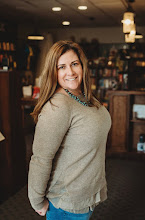This will be a short, but sweet, post. I just wanted to share
something that has really been helping me plan in the last few years. Looking
at my students’ work this week, I realized I’ve changed a lot from the teacher
I was eighteen years ago. Assignments, lessons, anything, have to go through
two guiding questions…
What is the purpose of
this?
Is this authentic?
When I ask myself those question, it eliminates a lot of
what I used to think was important.
Take a writing activity this week. I used Linda Reif’s
likes/dislikes lesson. I’ve created lists with my students in our journals
before – list what you like, list what you don’t like. When you need ideas of
what to write about, look there for ideas if you are stuck. Linda goes a step
further and has them list their ideas on a piece of paper. They could
illustrate them, color them, etc. Here is a sample from my classroom.
I thought through this lesson and assignment. What was the
purpose? To generate a list of topics for my students for further writing and
get to know them better at the start of the year. What is the purpose of the
chart? Then we all could read each other’s answers, bringing our community
closer together. Was it authentic? I think so. I’ve made many similar lists in
my notebooks. I wouldn’t necessarily do the extra step of putting it on paper
for the wall, but for the benefit of building community, it made sense.
The bigger aha for me was when the kids asked – does it need
to be colored? Do you need every square to have an illustration? I thought
about it – and thought about how long it had taken me to create mine. (Colored and illustrated) I went back to the
purpose – we’re generating a list of topics, learning about each other to build
community.
So, why do I need illustrations or color?
Hmm. Well, it looks
better. It appears that they put in more effort. But does that fit the purpose?
So I left it at this. If you love coloring or drawing, of course you may
illustrate and color. If you don’t want to do that, you may list the things you
like and dislike. Color, don’t color, it is entirely up to you.
What I ended up getting fascinated me. Some kids obviously
love drawing and art. Their papers were beautiful. They do stand out more, but
that doesn’t matter to me. Some kids chose to illustrate the like side and not the dislike side because they thought that
created impact. Others shared that they hated coloring and were so glad they
could just write words. You know what? Their papers taught me just as much.
Purpose and authenticity help me really make better choices for my students. They guide me a lot in planning and even during lessons. Being a reader and writer myself also lets me reflect back and realize if it isn’t something I would do, if it doesn’t help me grow as a reader and/or a writer, than it doesn’t need to be in our classroom. This frees up time for what is really important for our students, which is my main goal.
















